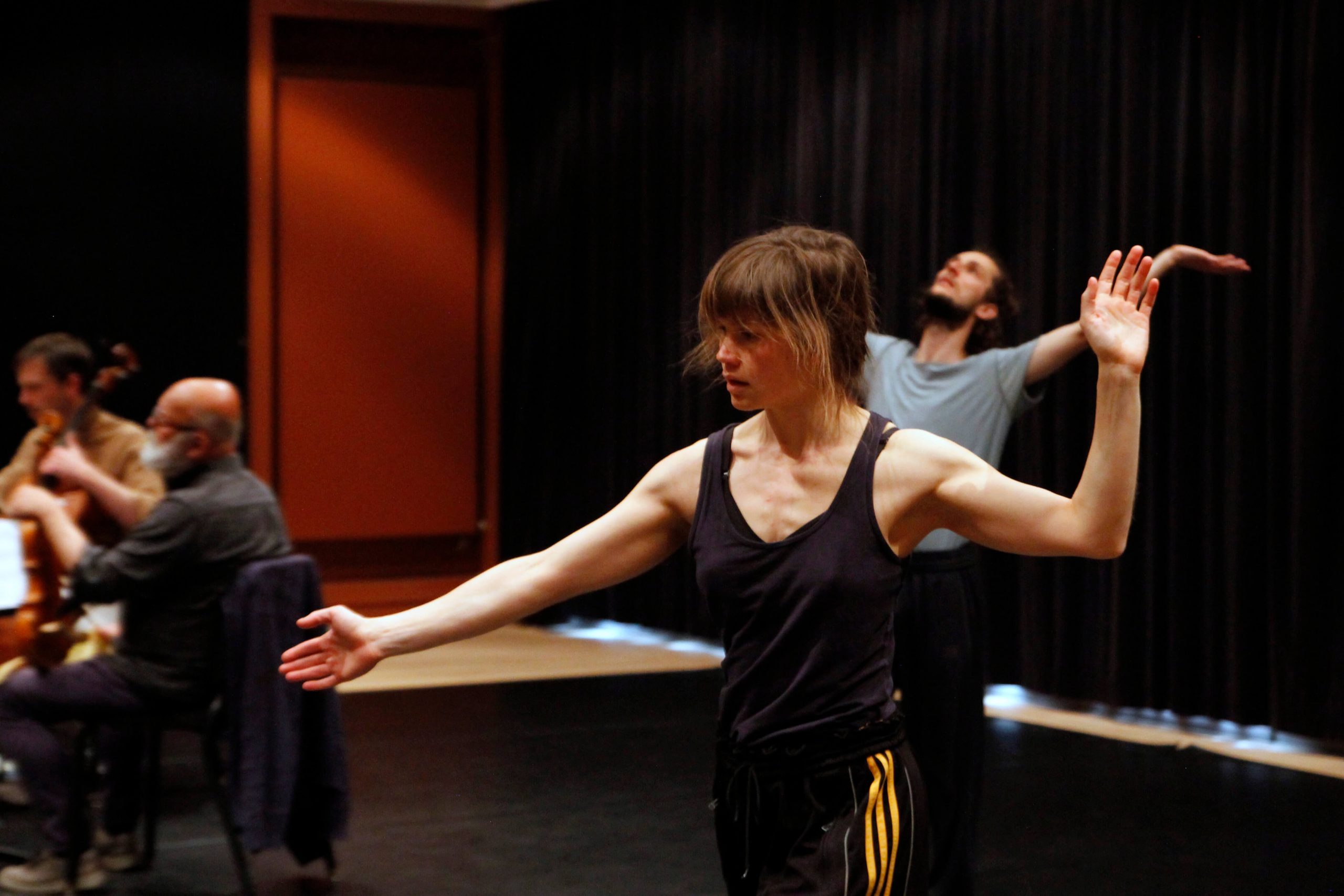
PROJECT
Duet for Two String Trios (working title)
Duet for two string trios is a coming together of pure dance and music, full of intimacy and lyricism, intense and disruptive, like the times we live in.
This new creation by Claire Croizé is made at the invitation of and together with the renowned Goeyvaerts String Trio, which consists of Fedra Coppens (violin), Kris Matthynssens (viola) and Pieter Stas (cello). Two of Claire’s regular dancers, Emmi Väisänen and Jason Respilieux, add their voices to the composition. Wuorinen’s music, influenced by Stravinsky and related to Schoenberg, takes us into a world that cannot be categorized. This world, complex and confusing as it is, makes the existence of dance possible.
Wuorinen described the first string trio as ‘a work in one movement, with slowly unfolding lines and a surging sense of drama, that becomes increasingly complex’. It is a short (20’) but monumental work, posing a real technical challenge for the musicians, and leaving little room for interpretation, while the second trio offers more freedom. The two pieces share musical material, but the half-century that separates them has transformed this to the point where it is barely recognizable. “Both pieces have a strong dramatic tension, laced with lyrical passages. For me, they are a mirror of our zeitgeist and of my own feelings in this confusing period: between excitement and fear, loss and confusion, memories of the past, and a present without reference points. The intimate form of the string trios, their purity and clarity, immediately attracted me. To guard that intimacy, I am adding only two dancers to the cast. I want to focus on a pure form of dance that matches the character of the music and shares the same questions, textures, intonations and feelings.”
For this, Claire can build on a long experience with contemporary classical music, starting with Chant Eloigné (2012), based on compositions by Schoenberg, Webern and Berg. “The period in which they lived and worked, the early 20th century, was, like our times, turbulent, uncertain and full of major upheavals in terms of aesthetics and society. Wuorinen also builds on this legacy, which to me makes his compositions very contemporary, and interesting to stage for an audience. He did not try to erase the past, but continued to build on it.”
Wuorinen’s compositions are known for their complex musical notation and the virtuosity they require. They demand an intense physical engagement from the musicians, so that vitality and energy radiate from their bodies. In Duet for two string trios, Croizé wants to reflect this virtuosity and exuberant musicality in the complexity of the dance material, the speed of the performance, the beauty and grace of the movements. “Wuorinen did not try to channel his emotions through music, but managed to engage his music to create emotions. Similarly, I want to excite the dancers’ and the audience’s emotional life through the mechanics of the body, abstract movements, technique and virtuosity. My goal, as always, is to create beauty by bringing music and dance together in a delicate equilibrium, where the dance does not simply illustrate the music, but has a voice of its own.”